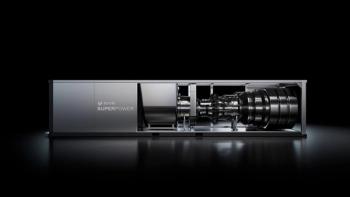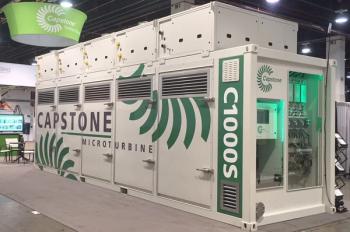
WTUI 2024: A Delve into the Details of GE Aeroderivatives
WTUI 2024 supports the user community for the maintenance and repair of aeroderivative gas turbines—with folks from GE Vernova onsite to answer questions—and HRSG.
The annual Western Turbine Users Inc. (WTUI) attracts hundreds of operators of GE Vernova aeroderivative units each year. A big reason for the show’s continuing popularity is the level of detail provided on every possible aspect of maintenance of LM2500, LM6000, and LMS 1000 units. Even the LM5000, which has reached its end-of-life, merits its own discussion forum during the event. After all, there are still some of these units still running in the field. Even if the OEM no longer supports it, the user community meeting provides valuable insight into how to find parts, how to fix problems, and workarounds to keep the machines running.
GE Vernova sends a large number of personnel to the event to address questions, explain the latest findings in technical information letters, and answer user questions. Clive Nickolay, CEO of GE Vernova’s Aero Business Line, used the event to cover various deficiencies in the supply chain for vital components and repairs. He laid out a few details of reorganization that is taking place to speed delivery, debug parts availability, and reduce the time taken to return a unit to the customer.
“Demand for materials, components, and engines is exceeding supply across the aero engine space,” said Nickolay. “We are maximizing the reuse of existing materials and components, beefing up our supply chain options, and working out ways to increase the repairability of parts. We are also investing in locating stock in the right places within the supply chain, so they are closer to our depos and our end users as a way to lower lead times.”
HRSG Maintenance
Jack Odlum, an engineer at the heat recovery steam generator (HRSG) inspection and repair firm HRST, led a session on the basics of HRSG maintenance. The theme was how to prevent unnecessary delays during outages by planning in advance. He recommended that inspections be done ahead of any major outages and covered the different ways to do it.
Non-destructive examination (NDE) techniques include sophisticated camera equipment to detect what the eyes might miss or cannot see. Common types of NDE include:
- Ultrasonic thickness is used to find out the thickness of a specific component. This is a good way to check for corrosion.
- Phased array ultrasonic testing is used to identify any inside diameter cracks or weld voids as well as find other subsurface issues. For external cracking, though, dye penetrant tests and magnetic particle techniques can be employed.
- Pulsed eddy current determines the relative thickness of ferromagnetic material underneath coverings such as stainless-steel bellows and insulation.
- Replication copies the grain structure to identify signs of material creep.
- Hardness testing is used to understand material properties.
- Infrared imaging reveals the operating temperature on seals, casings, and other surfaces.
Alternatively, borescopes inspect tubes, piping, and other internals inside HRSGs. Drones can also be used to view elevated components.
“Drones are a good way to avoid the need for scaffolding, but they can also spot problems where scaffolding will be required,” said Odlum.
Dry-Low Emissions Controls
Next up, Marc Forget, of the European Maintenance Support Aero Department at Engie Electrabel, delved into the intricacies of dry-low emissions (DLE) controls for GE LM series machines. DLE, he said, is all about reaching a compromise between NOx and CO emissions. If you lower the flame temperature, the CO rises, but a higher flame temperature leads to more NOx.
“You have to find the sweet spot within the thermal limits of the unit,” said Forget. “The use of a premix system helps ensure combustion is as complete and as lean as possible.”
When a premix combustion system is involved, it leads to humming and vibration of the flame. This excites the mechanical components of the engine. Good monitoring and appropriate controls are needed to compensate. Forget stressed the need for accurate temperature controls and the right combustion system design.
Newsletter
Power your knowledge with the latest in turbine technology, engineering advances, and energy solutions—subscribe to Turbomachinery International today.





